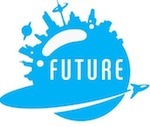 |
 |
Automation Technology Futures
By : Jim Pinto, Digital technology continues to permeate in the world at large, and several growth inflection points are brewing in the new digital automation world. Rapid shifts are occurring in all industrial environments, delivering knowledge and capabilities never before thought possible.
July 2013
|
 The concept of Internet-connected machines that collect data and communicate, often called Machine-to-Machine (M2M) or the Internet of Things (IoT), has been around for years. Now several leading companies have identified this as a strategic market with enormous potential.
The concept of Internet-connected machines that collect data and communicate, often called Machine-to-Machine (M2M) or the Internet of Things (IoT), has been around for years. Now several leading companies have identified this as a strategic market with enormous potential.
Digital technology continues to permeate in the world at large, and several growth inflection points are brewing in the new digital automation world. Rapid shifts are occurring in all industrial measurement and control environments - from wired systems to wireless connectivity; from conventional client-server systems to cloud-based processing; from tethered PCs and centralized operator stations to an abundance of mobile devices; from local data management to the advent of Big Data; from relatively large centralized systems to the distributed Internet of Things (IoT). We are heading into a world in which intelligence is widely distributed across the physical landscape. Remote sensors will generate enormous amounts of data, and cognitive processors will sort the information to deliver knowledge and capabilities never before thought possible. The concept of Internet-connected machines that collect data and communicate, often called IoT or Machine-to-Machine (M2M), has been around for years. Now several leading companies have identified this as a strategic market with enormous potential, though they still see the shift from their own points of view - not yet with a single coherent vision. Cisco estimates that more than 99% of physical objects are still unconnected, and champions the Internet of Everything to bring together people, process and data, and convert information into actions that create new capabilities and unprecedented economic opportunities in almost every arena. IBM's Smarter Planet strategy, more than five years old, is targeted at using data and analytics to build an intelligent and interconnected planet. GE calls this the Industrial Internet, emphasizing focus on industrial applications. Growth is viewed as a third wave, following the industrial revolution and the Internet revolution. They believe that 46 percent of the global economy, or $32.3 trillion in global output, can benefit from these new developments. They estimate that this could add $10 trillion to $15 trillion to the world economy in the next 20 years. To back up these projections, they have committed R&D funding of $500 million a year for the next three years, the first major commitment on a scale that could meaningfully accelerate adoption. The Automation IndustryMcKinsey Global Institute ranks IoT as one of the "most disruptive technologies to 2025." They suggest that much of that growth will be at the expense of older technologies and even entire industries falling into obsolescence.Since the 1970s, automation technology has had only incremental developments around core developments: PLCs, DCS and SCADA. Accelerating technology has generated rapid product obsolescence and drastic reductions in system life-cycles. A lot of hardware is slipping back into the commodity supply chain. Automation majors are all involved with promoting the Industrial Internet. They sense strong interest among large end-user customers, especially on the issues of cutting costs and improving productivity. The question remains: Which automation companies have the will and see the payback required to commit serious resources to generating major growth in these new markets? Beyond lip service, there just doesn't seem to be strong evidence yet that they are anywhere close to reaching the tipping point. For almost two decades, PLC inventor Dick Morley and I have been preaching peer-to-peer (P2P) control systems - suggesting that significant new advantages and benefits would emerge through distributed architectures. Conventional hierarchical control systems are prone to failure when complexity increases. Few have achieved practical I/O point counts of more than a few hundred thousand. By contrast, intelligent, autonomous I/O systems with algorithmic (rule-based) response mechanisms have no theoretical complexity limit. Vastly improved performance can be achieved at a fraction of the cost of deterministic hierarchical systems. The huge investments in the Industrial Internet seem to back this viewpoint. McKinsey cautions that by the time these disruptive technologies are exerting their influence on the economy in 2025, it will be too late for businesses to plan their responses. Nobody can afford to be the last. 
|
 Pinto's Points How to win in the Automation Business Go shopping - books, electronics, CD/DVD Selected advertising coming here. Contact Jim Pinto for rates. |
Return to Index of all JimPinto Writings

 Return to JimPinto.com HomePage
Return to JimPinto.com HomePage
If you have ideas or suggestions to improve this site, contact: webmaster@jimpinto.com
Copyright 2006 : Jim Pinto, San Diego, CA, USA
